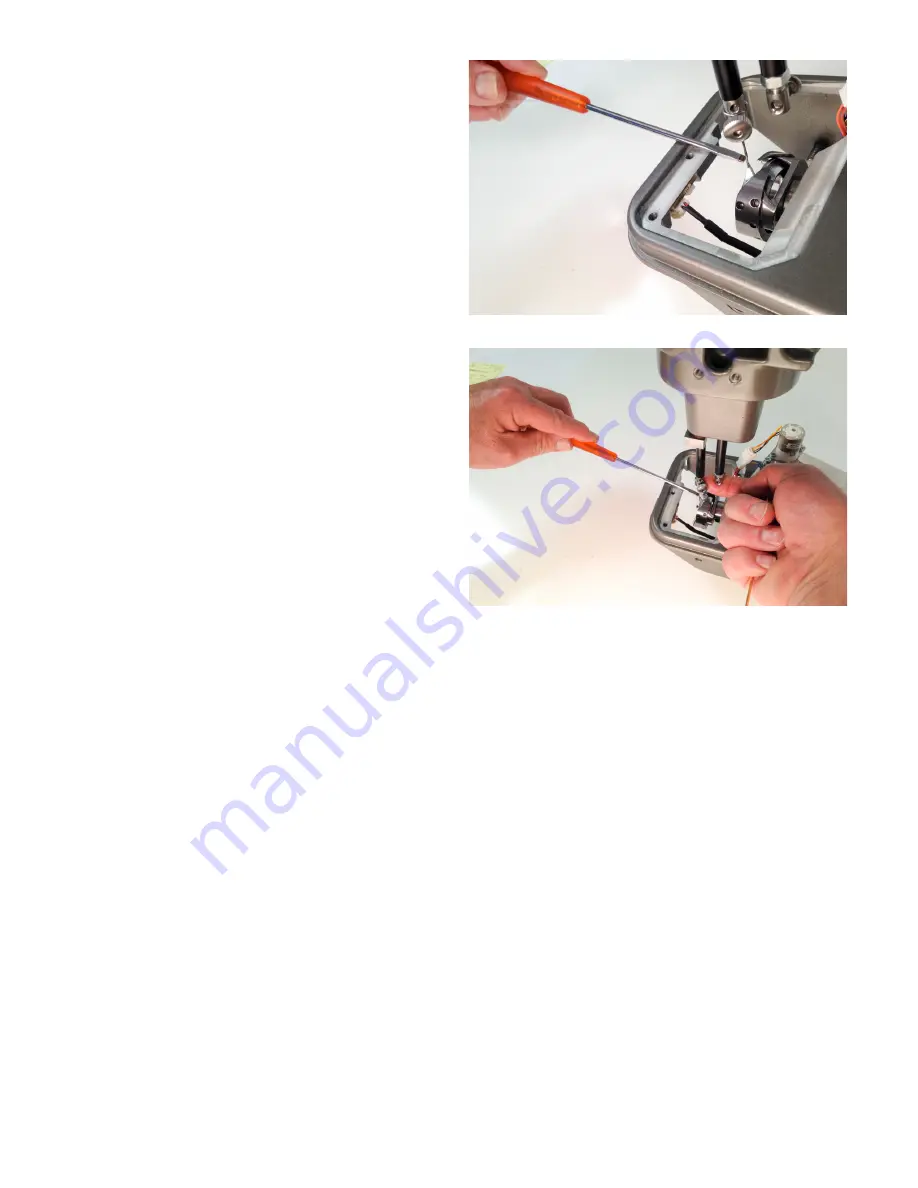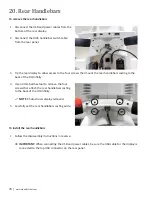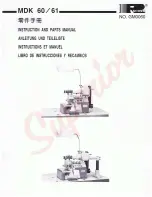
HQ Infinity Service Manual
| 63
8.
Check needle distance by touching the front
of the needle (front handlebar side) down low
by the hook point with a #1 flat screw driver
or similar tool. The needle should have a hard
sound and not deflect because it is set to
barely touch or brush the inside of the needle
scarf. There should be no light or gap showing
between the hook point and the needle scarf.
9.
To see just how much the hook point is rubbing
or brushing the needle scarf, lightly touch the
back of the needle bar down low by the needle
(hand wheel side). This will deflect the needle
bar slightly and should make the hard sound go
away when the tool is tapped on the front of
the needle. You’ll see the needle barely move
when tapped with the tool and a little light or
gap between the needle scarf and the hook
point. This means the two are barely touching
or brushing each other.
NOTE
: If you have to push hard on the back of the needle bar to make the hard sound go away,
the two are touching or brushing too much or too heavily. The needle distance in this case should
be increased until the hook is lightly touching or rubbing in the needle scarf.
10.
Carefully tighten both hook screws very tight to hold the timing setting.
11.
Check the setting one more time with the clamp and gauge to ensure nothing changed while
tightening the hook.
12.
Replace the stop finger. (See
To check the stop finger
in section 15,
Timing
.)
13.
Turn the hand wheel by hand through a couple full revolutions to make sure the hook is not hitting
something incorrectly before running the machine with the motor.
Why set the hook to barely touch or brush the needle inside the scarf instead of as close as possible
without touching like on other sewing machines?
Quilting machines do a simple straight stitch, but in a complex way. A stand-up quilting machine can be
moved at any time and in any direction during the stitch formation cycle. On a sit-down quilting machine,
the fabric can be moved at any time and in any direction during the stitch formation cycle. In both cases,
the needle can be deflected or moved around or away from the hook by the fabric, potentially causing
skipped stitches or shredding thread. In regular sewing machines, the fabric should only be fed in a very
















































